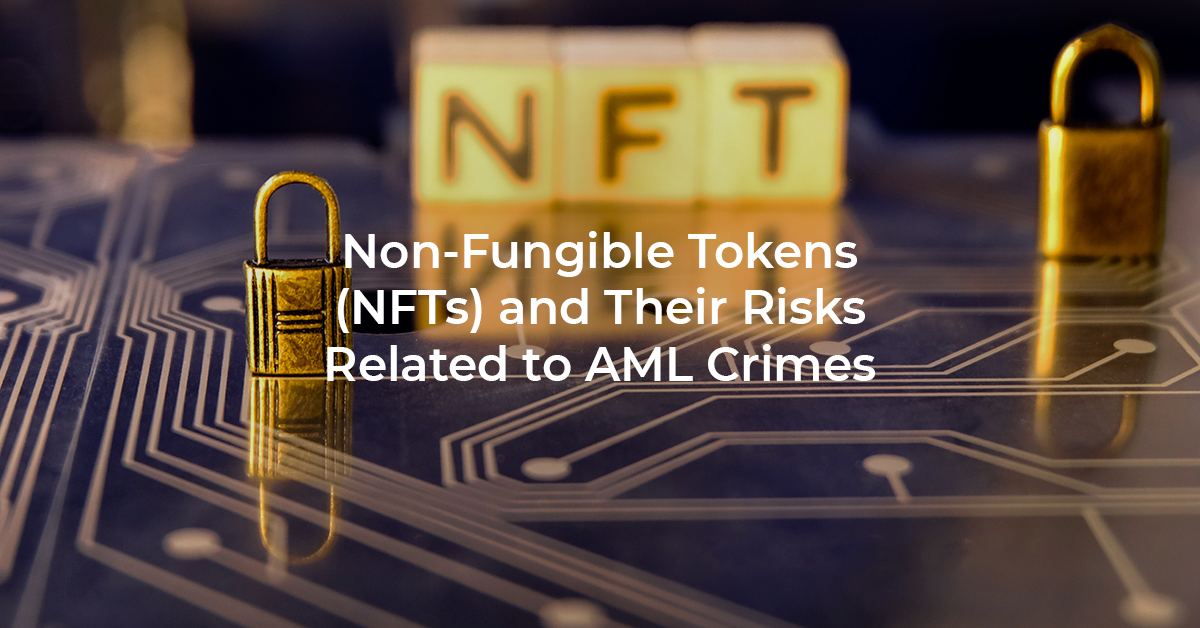
Non-Fungible Tokens (NFTs) and Their Risks Related to Money Laundering Crimes
What are NFTs?
NFT stands for “non-fungible token” which means that the NFTs cannot be exchanged with each other as they carry incomparable values. NFTs are stored on a distributed ledger technology (DLT) or more specifically on the Ethereum blockchain. The robust network architecture of Ethereum differentiates it from Bitcoin and enables it to employ blockchain-based applications such as NFTs.
The uniqueness of the NFTs is categorized as rare, super-rare, limited, and others. It is possible to produce NFTs out of all kinds of digital objects such as images, GIFs, videos, sports highlights, video game items, wearables, music, etc. NFTs work as the digital authenticator of the physical or regular items and as they offer exclusive ownership by writing it on the blockchain which is unchangeable and irreversible, one NFT can be owned by one owner until it is sold to someone else.
Fraud and money laundering risks of NFT technology
It would be unfair to admit that the security and precision in the trade of digital items have increased with the introduction of NFTs. Despite their positive and advantageous merits, dealing with the NFTs carries certain risks of fraudulent activity as they are open to being manipulated by criminals.
Currently, there is only a limited or in many cases no regulation or deterrent law addressing the NFTs to protect the creators, investors, or traders. Therefore, it requires extra attention when engaging with the NFTs keeping in mind that some of the NFT platforms may not require identity verification from their sellers or traders. It is challenging for the platforms to understand whether the seller of an NFT is the creator of the piece because there is no legal enforcement on who can access and sell NFTs on the digital marketplace.
The unregulated and decentralized nature of the NFTs paves way for the money launderers as well. While conventional art pieces are subject to related regulations and requirements such as the proof of property ownership to prevent money laundering, the NFTs are currently exempt from such regulations.
The aspect that makes the NFTs more vulnerable to money laundering activities is that the pricing of an NFT is prone to different interpretations as – in comparison to traditional art – the physical factors like the condition and age are not valid for the digital art pieces. The money launderers discovered this subjective and exploitable side of the NFTs and started trading NFTs for laundering their illegally earned money with almost no suspicion as opposed to trading regular art pieces.
How can NFTs be regulated?
On the one hand, there is an increasing trend in the interest in and use of the NFTs, while on the other hand, there are important questions and challenges that need to be addressed by the regulators and other individuals or organizations that bear on the virtual asset markets. The regulatory framework currently remains insufficient or incomprehensive to cover the compliance-related aspect of the NFTs, therefore the risks they pose need to be analyzed in detail by applying versatile processes to involve detecting, evaluating, and minimizing their effects. A couple of primary actions to be taken can be summarized:
- Implementing a risk-based approach to avoid undesirable transactions.
- Setting up a real-time alert system to act on suspicious activity faster
- Minimizing the potential for illegal activities and making sure that the quality of the UX is not affected
Upcoming Laws and Regulations for NFTs
The fact that NFTs are currently being unregulated does not necessarily mean that they will remain so shortly. Specific legal enforcements might be applied by global authorities or states including compliance related to KYC (Know Your Customer) and AML (Anti-Money Laundering) procedures, requirements to verify the traded items together with their records, or the upcoming Europe-wide Markets in Crypto-Assets Regulation (MiCAR).
One of the main challenges in the process of regulating NFTs stems from the ambiguity in the status of the NFTs as the Financial Conduct Authority guidance on the crypto assets does not clarify whether NFTs are to be seen as a security or not. Similarly, the FATF (Financial Action Task Force) acknowledged that the NFTs require clarification and included directions on how to identify and regulate NFTs in its recently published guidance. The FATF guidance on NFTs explains that the evaluation of NFTs is to be carried out on a case-by-case basis as they are not reckoned to be virtual assets by their general usage. They can only be regulated as virtual assets, highlighted by the FATF when their use of them falls within the definition of a virtual asset. The main challenge for those who are closely involved with NFTs is to decide which NFTs are included in the FATF’s virtual asset definition and then they need to ensure that regulatory requirements are fulfilled.
